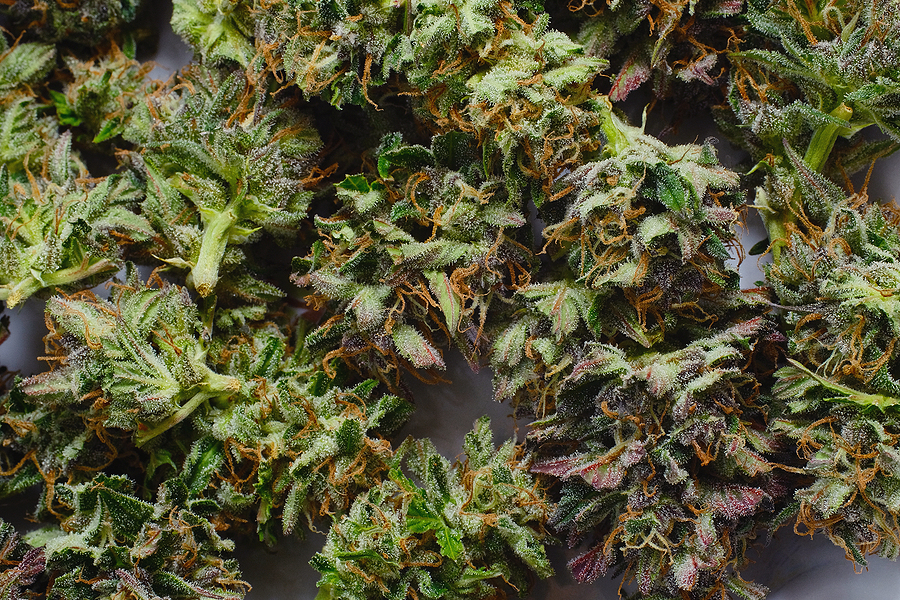CBD For Joint Pain And Arthritis
The increasing prevalence of chronic arthritis pain has led to an intensified search for alternative treatment modalities. Among the potential substitutes, Cannabidiol (CBD), a non-intoxicating compound in marijuana, is gaining considerable attention.
Despite the fact that 14% of Americans tried CBD products for pain in the joints and 29% of participants in an Arthritis Foundation poll stated their use of CBD, the scientific substantiation affirming its safety and efficacy remains limited. Initial laboratory and animal studies have demonstrated promise; nevertheless, more comprehensive clinical trials are required to definitively establish the effectiveness of CBD.
While some users have reported enhancements in physical function, sleep quality, and overall well-being following CBD usage, this alternative treatment does not come without its challenges. Potential side effects, uncertain potency and purity levels, as well as elevated costs, pose significant obstacles. Additionally noteworthy is the lack of health insurance coverage for these treatments.
As such, it is recommended that those considering this route select independently tested products and incorporate CBD into a broader pain management plan while ensuring consultation with healthcare providers to maintain a balanced treatment approach.
- CBD is being considered as a treatment for chronic arthritis pain, but well-designed studies demonstrating its safety and efficacy do not exist.
- CBD users report improvements in physical function, sleep, and well-being, but CBD can also cause lightheadedness, sleepiness, dry mouth, and rarely, liver problems.
- CBD treatment can be expensive and is not covered by health insurance, and its potency and purity may be uncertain, as well as its ability to interact with other medications.
- CBD should not be the first choice for pain relief, and nonmedical practitioners should not manage chronic pain. Healthcare providers should be consulted for a reasonable treatment plan, and conventional medications may still be important, depending on the type of arthritis.
CBD for Arthritis Joint Pain: Effectiveness, Safety, and More
Considering CBD for combating chronic arthritis joint pain presents a potential panacea, though the paucity of peer-reviewed, precise studies posits a pressing need for further exploration into its safety and efficacy.
Current understanding is rooted in laboratory and animal studies, which suggest that CBD may interact with receptors in the endocannabinoid system, a complex cell-signaling system involved in maintaining bodily homeostasis. These interactions are postulated to trigger anti-inflammatory responses that are potentially beneficial for alleviating arthritis-associated inflammation.
However, comprehensive clinical trials remain necessary to substantiate these preliminary findings and discern the exact mechanisms through which CBD could ameliorate arthritis symptoms.
Despite its potential benefits, several caveats accompany the use of CBD. The potency and purity of commercially available CBD products can vary considerably, posing risks of inadvertent consumption of contaminants or inaccurate dosing. Adverse effects such as lightheadedness, sleepiness, dry mouth, or even rare liver problems can also occur.
Furthermore, there’s potential for drug interactions with other medications taken concurrently—an often overlooked risk that warrants careful consideration. Henceforth, healthcare providers must be consulted before integrating CBD into an existing in the reductions of pain regimen to mitigate these risks effectively.
High costs associated with regular CBD treatment present another hurdle, as most health insurance plans do not cover this non-traditional therapy yet. Consequently, while early evidence hints at the promise of using CBD for arthritis relief, more research is needed to fully evaluate its safety profile and therapeutic potential.
A word about arthritis pain
Understanding the complexity and myriad manifestations of this debilitating condition is crucial, as arthritis can dramatically differ in its symptoms and impact, particularly when comparing common types such as osteoarthritis and rheumatoid arthritis.
Osteoarthritis, the more prevalent type, is characterized by a gradual wearing away of the cartilage that cushions joints, leading to pain, stiffness, and reduced mobility. It generally affects weight-bearing joints like the knees and hips but can occur in any joint.
Rheumatoid arthritis, on the other hand, is an autoimmune disease where the body’s immune system mistakenly attacks healthy joint tissues, leading to inflammation and swelling that can erode bones and deform joints over time. Pain in both conditions stems from different mechanisms: mechanical stress-induced damage in osteoarthritis versus inflammatory processes in rheumatoid arthritis.
Irrespective of the specific type of arthritis—whether it is osteoarthritis or rheumatoid arthritis—managing pain effectively remains a key treatment goal.
The introduction of cannabidiol (CBD), a non-intoxicating compound found in marijuana, into therapeutic options has caused a significant shift in perspectives towards reductions in pain strategies for these conditions. While patients report improvements with CBD usage according to surveys by institutions like The Arthritis Foundation, it’s important to consider that not all individuals respond similarly due to variations in individual physiology or illness characteristics.
Furthermore, there isn’t one single CBD-containing product suited for different types of arthritis; personalized treatment plans are necessary depending on patient needs and responses, which should be developed under medical supervision, considering potential side effects or interactions with other medications.
CBD for Joint Pain
Even though there isn’t a lot of clinical evidence to support its effectiveness, there is growing interest in both oral and topical applications of cannabidiol as a way to ease the pain of joint diseases.
Oral CBD is often consumed in the form of oils, tinctures, or capsules and works systemically to provide pain relief throughout the body.
On the other hand, topical CBD products such as balms, creams and lotions are applied directly to the skin over painful joints, providing localized relief.
These methods offer people with arthritis more control over their pain management strategies by allowing them to adjust dosage levels according to their individual needs.
However, it should be emphasized that proper following of product usage instructions is vital due to possible side effects.
Moreover:
The potency and purity of CBD may vary between different brands.
Interactions with other medications can occur.
CBD treatment can incur high costs as it’s not covered by health insurance.
Halting prescribed medications to protect joints from future damage without consulting a healthcare provider could have serious repercussions.
Despite these cautionary notes, many individuals suffering from arthritis report an improvement in physical function, sleep quality, and overall well-being after using CBD products.
It becomes clear then that, while further scientific research into human applications is required, public opinion appears to strongly support considering CBD to treat joint pain within an overall comprehensive pain management plan.
Are there downsides to CBD treatment?
Effects of cbd treatment, the use of this increasingly popular cannabinoid compound is not without potential pitfalls and drawbacks. Among these are side effects, which some users report include lightheadedness, sleepiness, dry mouth, and, in rare cases, liver problems.
Also of concern is the possible interaction of CBD with other medications a patient may be taking. The potency and purity of CBD products can also be uncertain due to inconsistent regulation and oversight in the industry. This means that patients may not always receive what they believe they are purchasing, a factor that can significantly impact both safety and efficacy.
Additionally, concerns have been raised about the long-term implications for the body’s natural pain regulation system when using cannabinoids like CBD as a treatment for chronic pain. Chronic use could possibly alter how our bodies perceive and respond to pain signals.
Another downside to consider is the cost associated with regular use of CBD products; at present, it’s an expensive treatment alternative that isn’t typically covered by health insurance plans. For many arthritis sufferers operating within tight budgets, this could render CBD-based therapies out of reach financially.
Therefore, while there seems to be promise in using CBD for treating join pain, more robust clinical trials are needed to fully understand its effectiveness and potential risks associated with long-term usage.
Are there guidelines about the use of CBD for chronic arthritis pain?
Authorities have proposed a few guidelines to safely navigate the relatively unexplored territory of cannabinoid-based therapies for persistent inflammatory discomfort.
One pivotal recommendation is to choose a CBD product that has been independently tested for purity, potency, and safety. This process verifies that the product’s contents are accurately represented on its label and ensures that it is free from harmful contaminants. Further assurance can be obtained if the product has received a Good Manufacturing Practices certification, demonstrating compliance with rigorous production standards.
Another critical guideline emphasizes the need to integrate CBD into an overall pain treatment plan. It is advisable to begin with a low dose taken in the evening to monitor potential side effects such as lightheadedness or sleepiness. Dose adjustments may then be made under medical supervision based on the patient’s response and tolerance.
Given the complex nature of chronic arthritis pain and potential interactions between CBD and other medications, consultation with healthcare providers should precede any alterations to treatment regimens. This collaborative approach fosters safe exploration of novel therapies while maintaining established protective measures against progressive joint damage inherent in certain types of arthritis.
Conclusion
In conclusion, the rising trend of CBD use for arthritis patients is noteworthy.
Many people use CBD to treat their pain, with a striking 29% of respondents in an Arthritis Foundation poll claiming to utilize CBD specifically as a cure for arthritis.
These figures underscore the need for further rigorous scientific research to conclusively establish the safety and efficacy of CBD treatment.
Caution must be exercised due to potential challenges, including side effects, variable potency and purity, high costs, and a lack of insurance coverage.
It is imperative that individuals considering this route select independently tested products and incorporate CBD into a comprehensive treatment of pain plan under healthcare provider supervision.
This balanced approach ensures optimal treatment outcomes and mitigates the risks associated with unregulated usage.
FAQs
Yes, CBD can help with joint pain and inflammation.
CBD oil, creams, gels, and capsules are common types of quality CBD products.
You can take CBD oil orally, apply it topically, or use it in a vaporizer.
Studies have shown that CBD reduces inflammation and chronic pain associated with arthritis.
CBD might reduce inflammation, alleviate pain, and improve sleep quality.
CBD is able to help with reducing inflammation and pain associated with psoriatic arthritis.
The amount of CBD you take depends on your weight, the severity of your symptoms, and the quality of the CBD product.
CBD is thought to help with chronic joint pain.
CBD has shown promise as a potential arthritis treatment, but more research is needed to fully understand its effectiveness.
Full-spectrum CBD contains all cannabinoids found in the cannabis plant, while broad-spectrum CBD contains all cannabinoids except THC. CBD isolate contains only CBD.
Resources:
Frane, Nicholas, et al. “Cannabidiol as a treatment for arthritis and joint pain: an exploratory cross-sectional study.” Journal of Cannabis Research 4.1 (2022): 47. [HTML] springer.com
Khaleghi, Murdoc. “New arthritis foundation guidelines on CBD use could be first of many more to come.” Alternative therapies in health and medicine 26 (2020): 8-11. [PDF] athmjournal.com
Philpott, Holly T., Melissa O’Brien, and Jason J. McDougall. “Attenuation of early phase inflammation by cannabidiol prevents pain and nerve damage in rat osteoarthritis.” Pain158.12 (2017): 2442. [HTML] nih.gov










